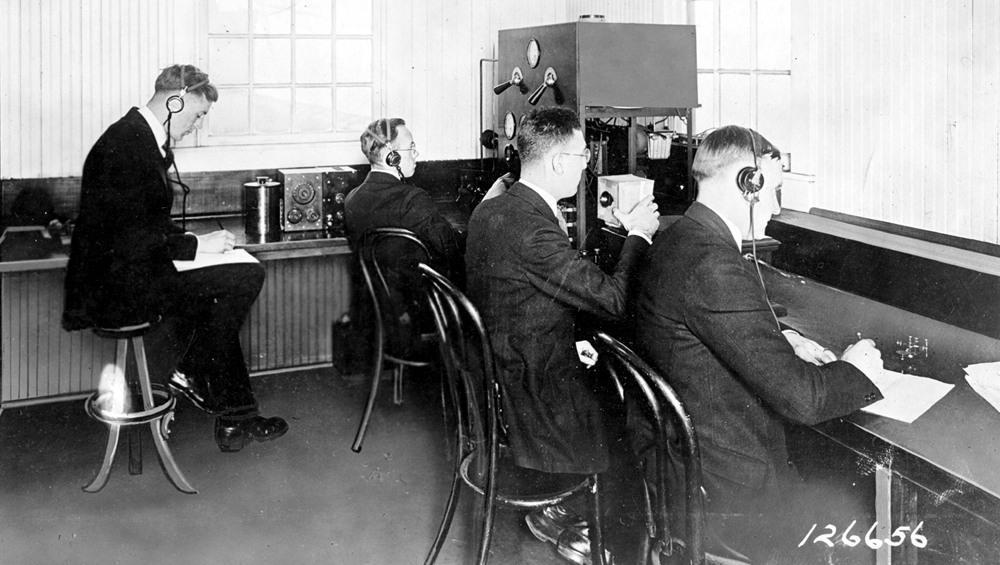National Museum Of Broadcasting Announces Proposed Site, Plans For Museum
 The National Museum of Broadcasting (NMB) in Pittsburgh today announced plans for a museum to showcase the origins of broadcasting and electronic media with a vision to eventually become an important focal point for tourism and education related to the region’s history of innovation.
The National Museum of Broadcasting (NMB) in Pittsburgh today announced plans for a museum to showcase the origins of broadcasting and electronic media with a vision to eventually become an important focal point for tourism and education related to the region’s history of innovation.
“Our museum will be more than a bunch of dusty old radios and TVs, although we have plenty of them,” said Bill Hillgrove, Pittsburgh broadcaster and sports announcer and president of the nonprofit museum’s board of directors, in his opening remarks to the crowd of community leaders, elected officials and some of Pittsburgh’s famed broadcast celebrities. “It will be an experience … to show how electronic media began and evolved in immersive and interactive ways.”
The proposed museum will take millions of dollars to construct and develop in the next several years, but Hillgrove and the board credited the support and partnership of the Regional Industrial Development Corporation (RIDC) and Pennsylvania State Sen. Jay Costa (D) of Allegheny County’s 43rd District, with helping to bring together the parties to make it a reality.
“All of our communities deserve the opportunities and success that come from economic revitalization and the continuous development of places and spaces that make our state and this region culturally diverse,” Sen. Costa said at the press conference. “Cultural attractions, and this future museum, will be another one of our treasured entities that support tourism which, in the end, complements what new business and the redevelopment of these brownfields are already doing in this community.”
The site of the proposed museum was one of several suggestions for the vacant bank building, a suggestion that was brought forth in a 2020 reuse study commissioned by the RIDC, which currently owns the property. In that study, residents and community leaders noted the historic significance of the Turtle Creek Valley from the time of George Westinghouse and his development of the Westinghouse Electric and Manufacturing site, to its transformation in what is now known as Keystone Commons. The RIDC purchased the former Westinghouse plant— which housed the original KDKA Radio studio — from Westinghouse Electric in 1989.
The bank building sits across the street from Keystone Commons and just yards away from the site where the first licensed radio broadcast, on what came to be known as KDKA, occurred on Nov. 2, 1920. The announcement of the future of a historic broadcast museum on the date from 103 years before, was not lost on the RIDC.
“Our efforts to revitalize old industrial properties always include components that connect us to our history, even as we move the properties toward the future,” said Timothy White, RIDC senior vice president of business development and strategy. “The National Museum of Broadcasting would be a welcome addition to the campus George Westinghouse built: Keystone Commons. We look forward to working with Senator Costa and the museum’s leadership as they seek to realize their vision.”
The vacant bank building stands at more than 10,000 square feet of useable space, with parking for 250 vehicles. It is accessible from I-376 (Parkway East), PA Route 30 and the Pennsylvania Turnpike. The location made it “an ideal spot for a museum,” Costa added.
At the close of the press conference, the NMB’s board of directors joined Costa and Hayley Haldeman, chairperson of the Pennsylvania Historical & Museum Commission (PHMC), in the unveiling and rededication of an historic marker that will be placed down the street from the proposed museum, to memorialize the site where radio and media were born in 1920.
“The historical marker program, which began in 1946, stands as one of the Historical & Museum Commission’s most popular initiatives. Each marker serves as a vital connection to our history,” Haldeman said. “This rededicated marker, honoring the birthplace of radio and media in 1920, joins more than 2,500 markers spread throughout the state. These markers collectively tell the story of the remarkable individuals, locations and events that have shaped our Commonwealth’s legacy.”
The National Museum of Broadcasting in Pittsburgh is a 501 C3 nonprofit organization dedicated to the preservation of radio and television and related broadcast and electronic industries, based in the city where broadcasting began in 1920.























Comments (0)